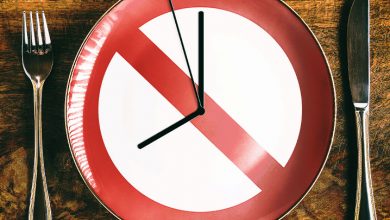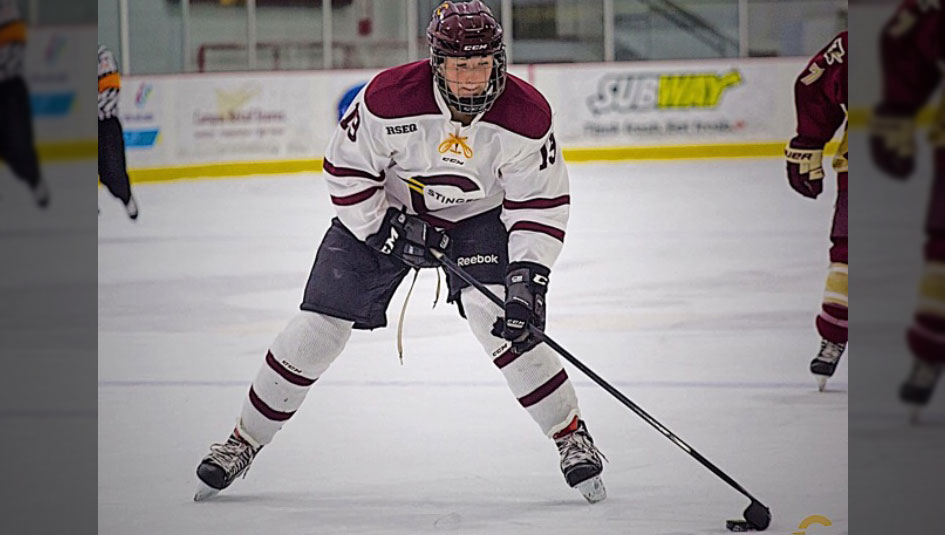T1D and Scaling Mt. Kilimanjaro
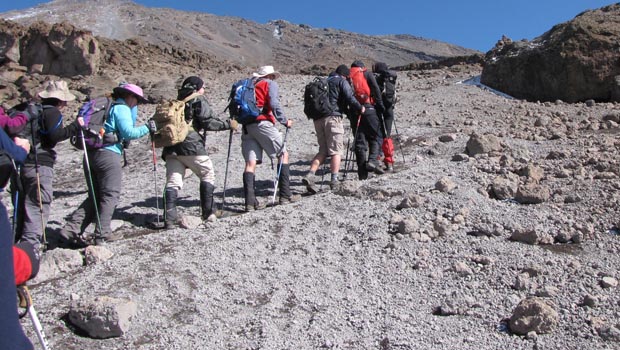
In June 2014, JDRF UK supporters broke a record for the most people with Type 1 diabetes on the summit of Mt. Kilimanjaro in Tanzania. The hike was part of an effort to raise awareness and funds for JDRF cure research. British Type 1 diabetes athlete Paul Coker was a member of that group. Insulin Nation interviewed him about his experience:
IN: How did the climb go? Was it as you imagined?
Paul: The whole trip was amazing! The first four days were easier than I anticipated and then summit night was the hardest thing that I have ever done in my life. We walked through the night in temperatures well below freezing, single-file, and the oxygen saturation was so poor that talking to the people around you was simply impossible.
There are 3 summits to Kilimanjaro: Gilmans Point, Stellar Point, and Uhuru Peak, the highest. As we approached Stellar Point, I suddenly started experiencing altitude sickness, and the porters carried my day pack. I still managed to push through it and made the summit at Uhuru Peak. Watching the sunrise over the glacier with the clouds beneath my feet is a memory that I will take with me forever.
Unfortunately two members of our team did not make the summit because of health concerns. I’ve spoken with one of them and he intends to finish the job in next year’s challenge!
IN: How did you physically train for it?
I was invited to join the Kilimanjaro challenge just a few weeks after running a half-marathon, so my fitness levels were already good. In the middle of February I began to spend more and more time walking in the hills and I joined some of the team for a walking weekend.
IN: What are some unique challenges that mountaineering poses to people with Type 1 diabetes?
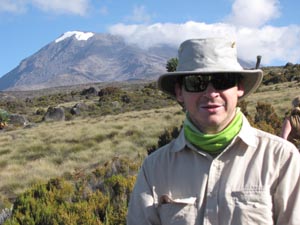
Paul: T1D is different for each and every one of us; we all had different experiences on the mountain some of us became very insulin resistant as we passed through 4500 metres (14,764 feet), while others were not affected. Personally I found that my insulin requirements were just 20% of normal until we reached 4500 metres, and then I became massively insulin resistant. I needed about 300% of my normal insulin dose and yet I still struggled to maintain normal glycemic control. On summit night I did not consume any carbohydrates at all because my BG (blood glucose) levels were just so high; yet as I climbed through the night my levels settled down and I maintained absolutely normal BG levels.
A universal challenge was in being able to take regular BG tests. As the altitude increased, the temperature dropped massively, and many BG meters stopped working. For those meters that continued to work, taking gloves off to do a test when the temperature is 20 degrees below freezing in the middle of the night was difficult.
Another challenge is that one of the effects of altitude is a loss of appetite; consuming the recommended number of carbohydrates was impossible and we learned to manage our BG levels by reducing insulin doses rather than increasing carb intake.
In addition, we experienced one insulin pump failure on the mountain due to condensation getting into the pump. My own pump went on to fail the day after we left the mountain.
IN: How did your diabetes community help you train?
Paul: I am so grateful to the team that I climbed Kilimanjaro with; these guys were so incredibly supportive and inspirational. Before this challenge, we had never met each other, and yet as soon as we met the team started helping and supporting each other.
I should acknowledge Dilan Shah, a fellow mountain-climber with T1D who had previously summited Kilimanjaro; he gave us his time and expertise freely. We also had the best medical support you could hope for, including an endocrinologist, a certified diabetes educator, a dietician, and three doctors. There were also quite a few people on the team who do not have T1D themselves but live with it on a daily basis. My own brother, Mark Coker, joined the team to support us.
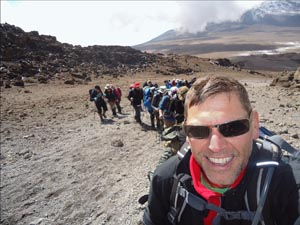
The weekend before I left to climb Kilimanjaro I was lucky enough to attend the annual Animas Sports Weekend in Loughborough. I learned so much from the presentations and I met some truly inspirational people with T1D. I was able to get some really good expert advice from both Dr. Ian Gallen and Dr. Alistair Lumb (two experts on Type 1 diabetes and sports) on strategies for managing my diabetes during the challenge.
One of the members of the team, Peter Davies, offered his holiday cottage in Snowdonia to us freely so that we had a base to train from. Perhaps the most remarkable thing about Peter is that he was diagnosed with T1D 58 years ago! He provided many of us with hope and inspiration.
IN: When did you decide to push the envelope of what a person with diabetes can do?
Paul: I was always an active child, but my diabetes always seemed to get in the way of my sporting goals. Then I discovered the work of Dr. Ian Gallen, the endocrinologist who helped Sir Steven Redgrave to continue his rowing career (and win Olympic gold) after he was diagnosed with diabetes.
Since then, I have had the opinion that my diabetes would have to learn to live with me. As my knowledge of diabetes has increased over the years and I’ve been able to tap into fantastic resources like Dr. Gallen’s runsweet.com, I’ve come to realize that diabetes is never a barrier to achieving your goals, dreams, and ambitions. Instead of saying, “I have diabetes I can’t do that,” I needed to change my own internal dialogue. I started by improving the questions that I asked myself, like “How can I run for 13.1 miles without having a hypo?” It was amazing to find that when I started to ask questions like this, I suddenly found people and resources that helped me to achieve that goal. I used the knowledge I gained and became my own walking experiment, making careful records about my activities and how my diabetes would respond.
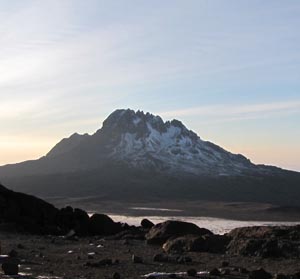
IN: Why do you think it’s important for people with Type 1 diabetes to challenge themselves?
Paul: When I am physically active I feel better, my diabetes is easier to manage, my blood glucose levels are more predictable, and I need less insulin to maintain optimum blood glucose levels. I believe that many of us with T1D can learn to use exercise as part of our diabetes management plan if we have the right education and support.
If you want to follow in Coker’s footsteps, learn more about the JDRF UK’s 2015 hike up Mt. Kilimanjaro at https://www.jdrf.org.uk/get-involved/join-in-an-event/treks/jdrf-climb-kilimanjaro
Thanks for reading this Insulin Nation article. Want more Type 1 news? Subscribe here.
Have Type 2 diabetes or know someone who does? Try Type 2 Nation, our sister publication.

